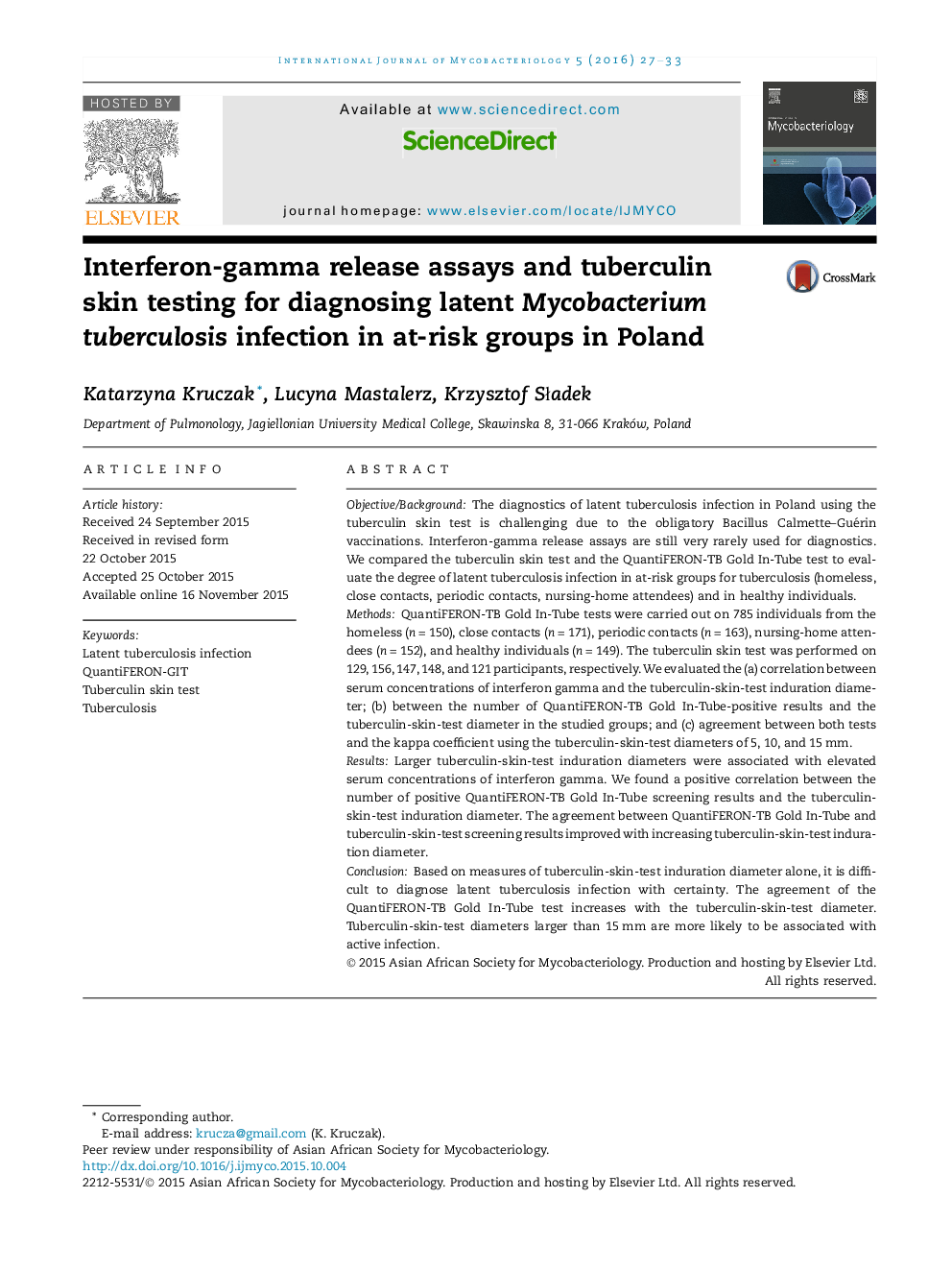| Article ID | Journal | Published Year | Pages | File Type |
|---|---|---|---|---|
| 3404987 | International Journal of Mycobacteriology | 2016 | 7 Pages |
Objective/BackgroundThe diagnostics of latent tuberculosis infection in Poland using the tuberculin skin test is challenging due to the obligatory Bacillus Calmette–Guérin vaccinations. Interferon-gamma release assays are still very rarely used for diagnostics. We compared the tuberculin skin test and the QuantiFERON-TB Gold In-Tube test to evaluate the degree of latent tuberculosis infection in at-risk groups for tuberculosis (homeless, close contacts, periodic contacts, nursing-home attendees) and in healthy individuals.MethodsQuantiFERON-TB Gold In-Tube tests were carried out on 785 individuals from the homeless (n = 150), close contacts (n = 171), periodic contacts (n = 163), nursing-home attendees (n = 152), and healthy individuals (n = 149). The tuberculin skin test was performed on 129, 156, 147, 148, and 121 participants, respectively. We evaluated the (a) correlation between serum concentrations of interferon gamma and the tuberculin-skin-test induration diameter; (b) between the number of QuantiFERON-TB Gold In-Tube-positive results and the tuberculin-skin-test diameter in the studied groups; and (c) agreement between both tests and the kappa coefficient using the tuberculin-skin-test diameters of 5, 10, and 15 mm.ResultsLarger tuberculin-skin-test induration diameters were associated with elevated serum concentrations of interferon gamma. We found a positive correlation between the number of positive QuantiFERON-TB Gold In-Tube screening results and the tuberculin-skin-test induration diameter. The agreement between QuantiFERON-TB Gold In-Tube and tuberculin-skin-test screening results improved with increasing tuberculin-skin-test induration diameter.ConclusionBased on measures of tuberculin-skin-test induration diameter alone, it is difficult to diagnose latent tuberculosis infection with certainty. The agreement of the QuantiFERON-TB Gold In-Tube test increases with the tuberculin-skin-test diameter. Tuberculin-skin-test diameters larger than 15 mm are more likely to be associated with active infection.
